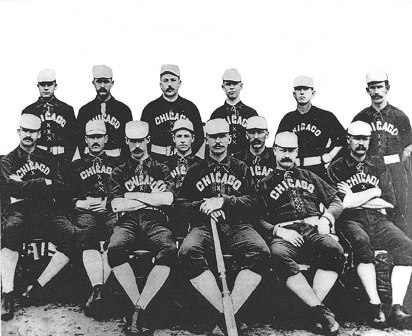Wallace Louis Bray was so well known by the pseudonym Happy Hogan, that some sources still do not include his given name. The Santa Clara, California native spent his entire professional career as a player and manager on the West Coast.
He was popular enough to be featured as the only non-big-league manager to be included in a series of syndicated articles by Chicago journalists Joseph B. Bowles called “How I win.”
He wrote Bowles:
“I am willing to write what I know about winning ballgames to help out the young fellows and perhaps give them some points. I tell it to them so loud and so often I might as well print it.”

Happy Hogan
Hogan said:
“The difference between a winning ball player and a losing one is all in the disposition of the man himself. Almost any ball player who is skillful enough with his hands and feet to play minor league ball is good enough for the major leagues if he only will study the game, and has the courage and the nerve to go forward.”
He said the “great weakness” of most players was their lack of interest in studying the game:
“(T)o win a man must devote a lot of time and thought to every point of the game. I attribute what success I have had in the profession to the fact that I always have kept hustling and studying the game.”
He said that after he each game:
“I get out by myself and study it over, figuring how plays were made, and how they might be improved upon, and then I try to explain my theories to players. I find that when the manager can go into his own clubhouse and discuss plays with his men, he not only helps himself, but helps the team.”
Hogan said he believed in “strict discipline on ball fields, but I also believe in fighting the umpires when they are wrong.”
Hogan said he questioned calls before they were made:
“I believe claiming everything in sight and claiming it quick. If there is a chance for argument on a decision make the claim for decision before the umpire makes his decision and the chances are you will get the decision by thinking quicker than the umpire did.”
And once the umpire had rendered a decision:
“Yell real loud at the umpire and then quit, for there is no good nagging at a man, no matter how bad he may be. Let the yell be loud enough to impress him. I have yelled a lot of games out of bad umpires, but I claim I never yet have let out a yell when I did not think I was right.”
As for how to win on the field:
“I am a firm believer in doing the unexpected all the time and upsetting the other team by making plays for which they are not looking. Playing for one run at a time is my theory, and when runners are on bases, within scoring distance, I believe in abandoning all the rules of the game in order to get the runs home. It may be bad baseball to hit with three balls and no strikes, but if a hit will score runs I want the batters to hit. It may be bad baseball to refuse to sacrifice with men on bases and none out, but if the player sees a chance to hit through the field, let him hit. I try to place the responsibility on the player himself, and to rely upon his judgment as to when to hit, or not to hit.”
Hogan said, “The unexpected” is what wins “and breaks up games and makes contests more spectacular and exciting.”
Hogan managed the Vernon Tigers for six full seasons, never winning a pennant—his teams finished second twice—his club was 16-18 in 1915 when a cold developed into double pneumonia and the man The San Francisco Chronicle called “unquestionably the most popular figure” in the Pacific Coast League, died at age 37.









